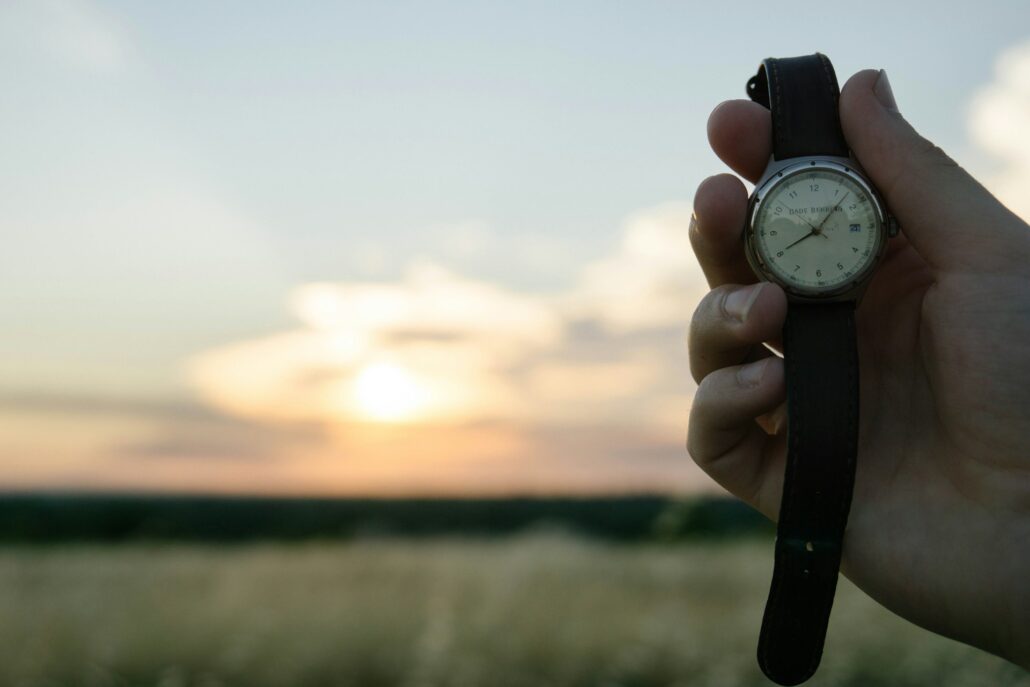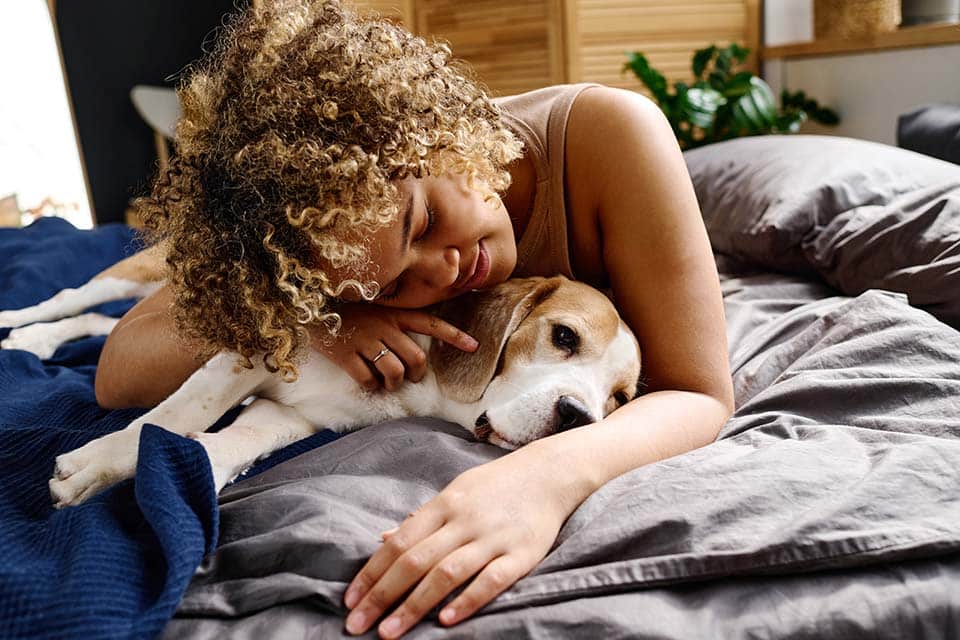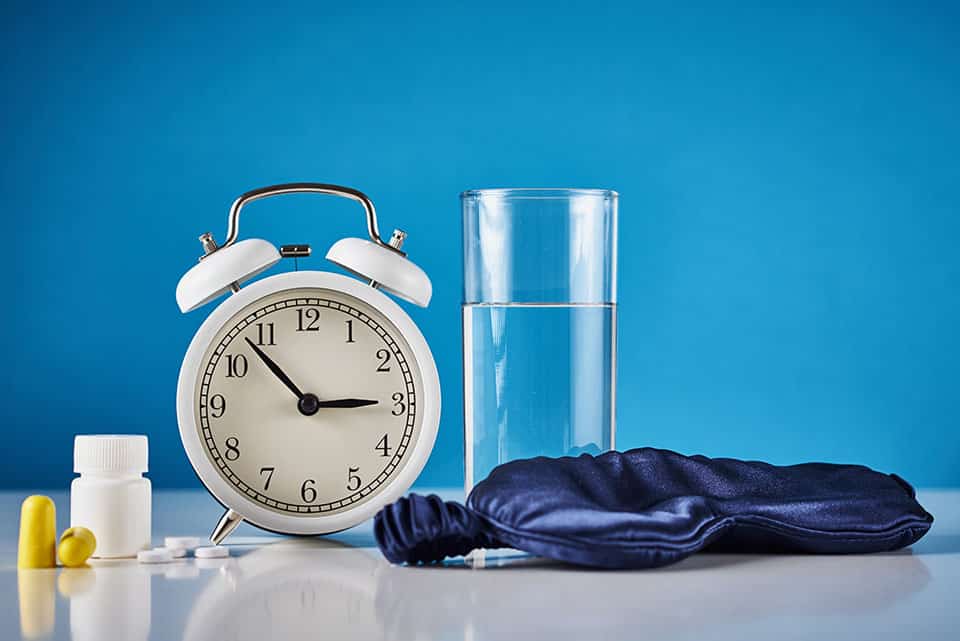In March 2021, the Better Sleep Council (BSC) administered The State of America’s Sleep in its continued effort to measure the quality of sleep and factors that can influence it. The following report details how Americans are sleeping today – revealing a greater divide in those who are sleeping better and worse – and key takeaways from excellent sleepers so we can all get a better night’s sleep.
Background
In 2019, the BSC launched The State of America’s Sleep, a benchmark survey (Wave 1 [W1]) with the goal of measuring the quality of sleep in the United States Year over Year (YoY). In 2020, year two, the BSC fielded the research prior to the pandemic (W2) and deployed additional research in the early days of the pandemic to understand its initial impact. This current study (W3) analyzes not only current sleep findings, but also trends that are beginning to emerge.
Methodological overview
2,000 surveys were fielded between March 5-12, 2021, among a representative sample of U.S. adults (age 18+), using a questionnaire lasting approximately 15 minutes. Sample size provides a confidence interval of ±2.19% at 95%.
Respondent Profile
| Gender | % | Age | % | Generation | % | Region | % | |||
| Male | 48% | 18-24 | 14% | Gen Z (18-22) | 9% | South | 38% | |||
| Female | 52% | 25-34 | 19% | Millennials (23-38) | 31% | Midwest | 22% | |||
| 35-44 | 17% | Gen X (39-54) | 25% | Northeast | 20% | |||||
| 45-54 | 15% | Boomers (55-73) | 30% | West | 20% | |||||
| 55+ | 36% | Silents (74+) | 6% |
SLEEP INDEX
Analysis was conducted to establish a Sleep Index (SI) that could be used to track America’s sleep quality over time. The SI is calculated using the following questions:
Q2. On average, how would you describe your sleep within the past two weeks?
| Excellent | Very Good | Good | Fair | Poor |
| 5 | 4 | 3 | 2 | 1 |
Q7. Within the past two weeks, how often have you felt the following when you wake up in the morning?
| Frequently
(10 to 14 times) |
Often
(6 to 9 times) |
Occasionally
(3 to 5 times) |
Rarely
(1 to 2 times) |
Never | |
| Tired (want to continue sleeping) | 1 | 2 | 3 | 4 | 5 |
| Rested/refreshed | 5 | 4 | 3 | 2 | 1 |
The multiplicative index was scaled so the average score is 100. The index was used to create three groups, as depicted below, for analysis purposes.
| Poor Sleepers
(SI < 90) |
Average Sleepers
(SI ≥ 90 and SI ≤ 110 |
Excellent Sleepers
(SI > 110) |
| 62% | 3% | 35% |
The sleeping divide
The “Divided States of America” has become a paradigm for the political, social, economic and health experiences of people. This wave of The State of America’s Sleep shows that this divide now characterizes how Americans are sleeping. The research shows for the first time a dramatic dichotomy in how America is sleeping – with far more people reporting they’re sleeping poorly or sleeping excellently, and few people with average sleep quality. This divided sleep experience has been exacerbated by the direct and indirect effects of the ongoing pandemic and its economic fallout.
The sleeping divide – who are the poor and excellent sleepers?
Beyond just the profound divide in how people are sleeping, the research shows other differences across America that correlate to sleep quality. For example, you will find more excellent sleepers in urban areas. They are more likely to be older and have a higher education. Their outlook is more positive, and they are more likely to feel good about the economy, think the country is moving in the right direction and be confident in the current administration.
You will find more poor sleepers in rural areas. They are more likely younger and will have less education. Their outlook is not as positive, and they are more likely to not feel good about the economy, not think the country is moving in the right direction and not be confident in the current administration.
How has COVID-19 exacerbated that divide?
COVID-19 has affected poor sleepers even more: They are experiencing physical and emotional pain, as well as a decline in mental health – almost half (48%) say their mental health has declined in the past year. We know poor sleepers have more stress, but they are also more likely to say that being a parent is a significant source of stress for them.
As expected, poor sleepers struggle with sleep – they do not sleep enough, struggle to fall asleep, wake up frequently and cannot go back to sleep after waking up. Over two-thirds (70%) wake up tired, and over half (60%) say they rarely, if ever, wake up rested or refreshed. Although most people don’t use sleep-promoting medication or other tools to help them sleep, poor sleepers are more likely to do so than excellent sleepers.
Poor sleepers are more likely to have increased their screen time during the pandemic, as well as increased their alcohol consumption – both behaviors reflected in other research on the effects of the pandemic.
What can poor sleepers learn from excellent sleepers to close the divide?
Although the research shows the depth of America’s sleep quality divide, it also suggests things poor sleepers can learn from excellent sleepers that would improve their sleep quality. Excellent sleepers have been participating in a variety of activities and continue to do so. They are also trying new activities and sticking with them. Excellent sleepers are regularly exercising, and many have increased their exercise in the last year.
Excellent sleepers are financial savers and have even significantly increased their savings since the COVID-19 pandemic hit.
Key Takeaways
A Nation Divided
- While both excellent and poor sleepers live in both rural and urban areas, poor sleepers are more likely to live in rural areas and excellent sleepers are more likely to live in urban areas
- 38% of excellent sleepers live in urban areas (30% of poor sleepers)
- 20% of poor sleepers live in rural areas (15% of excellent sleepers)
- Excellent sleepers are more likely to be older and poor sleepers are more likely to be younger
- More than one-third (44%) of excellent sleepers are 55+, which is significantly higher than poor sleepers (31%)
- More than one in four (27%) excellent sleepers are 65+, which is significantly higher than poor sleepers (16%)
- More than one-third (36%) of excellent sleepers are Boomers, which is significantly higher than poor sleepers (27%)
- While the Silent Generation represents a small percentage of excellent sleepers, Silents are roughly twice (1.6) as likely to be excellent than poor sleepers
- Excellent sleepers are more likely to have a higher education and poor sleepers are more likely to be less educated
- Over half (55%) of excellent sleepers have a bachelor’s degree or higher, which is significantly higher than poor sleepers (40%)
- Over half (60%) of poor sleepers have less than a bachelor’s degree, which is significantly higher than excellent sleepers (44%)
- Excellent sleepers are more likely to feel good about the economy, think the country is moving in the right direction and be confident in the current administration
- More than one-third (37%) of excellent sleepers feel good about the economy, which is significantly higher than poor sleepers (23%)
- Almost half (47%) of poor sleepers do not feel good about the economy, and that is significantly higher than excellent sleepers (34%)
- Over half (53%) of excellent sleepers think the country is headed in the right direction, which is significantly higher than poor sleepers (39%)
- The percentage of excellent sleepers who think the country is headed in the right direction has been increasing YoY and their agreement is significantly higher in 2021 than 2020 and 2019
- More than one-third (36%) of poor sleepers do not think the country is headed in the right direction, and this is significantly higher than excellent sleepers (28%)
- Over half (55%) of excellent sleepers are confident in the administration, which is significantly higher than poor sleepers (40%)
- The percentage of excellent sleepers who are confident in the administration has been increasing YoY and their agreement is significantly higher in 2021 than 2020 and 2019
- About one-third (35%) of poor sleepers are not confident in the administration, and this is significantly higher than excellent sleepers (28%)
- More than one-third (37%) of excellent sleepers feel good about the economy, which is significantly higher than poor sleepers (23%)
What Has Been Affected By COVID?
- Poor sleepers are more likely than excellent sleepers to experience physical and emotional pain, as well as stress. They also are more likely to have experienced a decline in their mental health over the last year.
- More than one-third (37%) of poor sleepers experience pain when sitting or standing and more than one in four (26%) experience pain when lying down, which is significantly higher than excellent sleepers (27%/12%)
- Almost one in four (23%) poor sleepers have been diagnosed with a medical condition (e.g., anxiety, depression, cancer, etc.) in the last year, which is 2.3 times more likely than excellent sleepers (10%)
- 17% of poor sleepers have experienced the loss of a loved one in the past year, which is significantly higher than excellent sleepers (10%)
- Almost half (48%) of poor sleepers say their mental/emotional health has declined over the past year – which is 2.5 times more likely than excellent sleepers (19%)
- Close to half (45%) of poor sleepers often or very often feel stress and are four times more likely than excellent sleepers (11%) to say they feel stress often or very often
- Poor sleepers are also more likely to say that being a parent is a very significant source of stress, with more than two-thirds (40%) feeling this way – which is significantly higher than excellent sleepers (29%)
- Poor sleepers struggle with sleep in a variety of ways and are more likely to use sleep-promoting medication or other tools to help them sleep
- Over half (56%) of poor sleepers do not get the recommended seven to eight hours of sleep per night – compared to less than one-third (31%) of excellent sleepers
- Poor sleepers are more likely to take more than 30 minutes to fall asleep, wake up more often, and struggle going back to sleep after waking up
- More than one-third (35%) of poor sleepers take more than 30 minutes to fall asleep (compared to 9% of excellent sleepers)
- More than half (53%) of poor sleepers wake up often or frequently during the night (compared to 28% of excellent sleepers)
- More than one-third (38%) of poor sleepers have trouble going back to sleep after waking up at night (compared to 9% of excellent sleepers)
- Poor sleepers are more likely to wake up tired; stiff, in pain or sore; or not rested/refreshed
- More than two-thirds (70%) of poor sleepers wake up tired (compared to 3% of excellent sleepers)
- More than one-third (39%) of poor sleepers often or frequently wake up stiff, in pain or sore (compared to 9% of excellent sleepers)
- More than half (60%) of poor sleepers rarely or never wake up rested/refreshed (compared to 1% of excellent sleepers)
- Most sleepers do not use sleep-promoting medication or other things to help them sleep; however, poor sleepers are more likely to use them than excellent sleepers
- Poor sleepers are more likely to often/frequently use sleep-promoting supplements or vitamins to help them sleep (16% of poor sleepers/9% of excellent sleepers)
- Poor sleepers are more likely to often/frequently use sleep-promoting OTC or prescription medications to help them sleep (12% of poor sleepers/7% of excellent sleepers)
- More than one in four poor sleepers (26%) regularly sleep with a pet (18% of excellent sleepers)
- More than two-thirds (38%) of poor sleepers regularly sleep with a fan (27% of excellent sleepers)
- 11% of poor sleepers regularly sleep with a sound machine/white noise/ phone app (6% of excellent sleepers)
- Poor sleepers are more likely to have increased their screen time during the pandemic, as well as increased their alcohol consumption
- More than two-thirds (42%) of poor sleepers have increased their screen time somewhat or a lot in the past year (30% of excellent sleepers)
- Poor sleepers (14%) are more likely to say their total screen time has increased a lot in the past year (8% of excellent sleepers)
- Alcohol consumption has increased somewhat or a lot in the past year for more than one in 10 (22%) poor sleepers (14% of excellent sleepers)
- More than two-thirds (42%) of poor sleepers have increased their screen time somewhat or a lot in the past year (30% of excellent sleepers)
- Poor sleepers struggle with finances and have lower incomes
- More than one in 10 (21%) poor sleepers have an income under $25K
- The average income for poor sleepers = $71K/excellent sleepers = $90K
- More than one-third (36%) of poor sleepers say they typically do not buy what they want when they want it (22% of excellent sleepers)
- Almost half (47%) of poor sleepers say they live paycheck to paycheck, which is significantly higher than excellent sleepers (33%)
- Two in five poor sleepers (40%) say their financial situation has changed negatively as a result of COVID-19 – this is significantly higher than excellent sleepers (30%)
- More than one in 10 (21%) poor sleepers have an income under $25K
- Poor sleepers have relationship issues and feel isolated
- More than two-thirds (41%) of poor sleepers’ relationships have suffered (e.g., friends, family, extended family) in the past year (27% of excellent sleepers)
- Almost one in five (19%) poor sleepers have a difficult relationship with their spouse/partner (8% of excellent sleepers)
- More than one in five (22%) poor sleepers do not have deep, meaningful friendships with people outside their family (14% of excellent sleepers)
- More than two-thirds (41%) of poor sleepers wish they had more friends (31% of excellent sleepers)
- More than two-thirds (39%) of poor sleepers have difficult times in social situations (19% of excellent sleepers)
- More than two-thirds (36%) of poor sleepers would love to go out but do not have anyone to go out with (21% of excellent sleepers)
What Are the Excellent Sleepers Doing?
- Excellent sleepers are exercising regularly, increasing their exercise and enjoying it – as well as participating in a variety of activities and continuing to do so
- Almost three-quarters (74%) of excellent sleepers have been exercising for more than a year – and almost one in five (19%) of those excellent sleepers who exercise tried exercise in just this past year and continued to participate
- More than one-fifth (22%) of poor sleepers say they tried exercising in the past year and then stopped
- Over half (54%) of excellent sleepers have tried outdoor activities (e.g., hiking, bike riding, kayaking, etc.) in the past year and continue to participate, or have participated in these outdoor activities for more than a year (and still participate)
- Excellent sleepers are more likely to have been participating in gardening, meditating and yoga for more than a year
- Over half (52%) of excellent sleepers have been participating in gardening for more than a year – 16% of excellent sleepers tried gardening this year and continue to participate
- More than two-thirds (41%) of poor sleepers have never participated in gardening or haven’t in several years
- More than one-third (38%) of excellent sleepers have been practicing meditation and one in four (25%) has been practicing yoga for more than a year
- Over half (52%) of excellent sleepers have been participating in gardening for more than a year – 16% of excellent sleepers tried gardening this year and continue to participate
- Excellent sleepers are more likely to say they enjoy physical activities (completely agree that they enjoy the activity)
- More than one-third (37%) of excellent sleepers completely agree that they enjoy exercising, which is almost two times (1.7) more likely than poor sleepers (22%)
- About one-third (33%) of excellent sleepers completely agree that they enjoy participating in outdoor activities (e.g., hiking, bike riding, kayaking), which is 1.3 times more likely than poor sleepers (25%)
- Excellent sleepers are more likely to say they have increased their exercise during the pandemic – almost one-third (32%) of excellent sleepers
- Close to one-third (33%) of poor sleepers say they have exercised less during the pandemic
- Poor sleepers are more likely to say they don’t engage in vigorous activity (e.g., running, tennis, aerobic dancing, spinning, CrossFit, etc.) or moderate activity (e.g., brisk walking, power yoga, water aerobics, etc.) at all
- Over half (54%) don’t engage in vigorous activity
- 30% don’t engage in moderate activity
- Excellent sleepers are financial savers and have even increased their savings
- Excellent sleepers are more likely to save money than poor sleepers
- More than two-thirds (70%) of excellent sleepers save money to pay for their children’s college education (46% of poor sleepers)
- Almost two-thirds (63%) of excellent sleepers save money for unforeseen home expenses (48% of poor sleepers)
- Over half (58%) of excellent sleepers regularly save money, so they have enough for retirement (42% of poor sleepers)
- Over half (54%) of excellent sleepers save money for unforeseen medical expenses (39% of poor sleepers)
- Over half (54%) of excellent sleepers regularly save money for vacation (40% of poor sleepers)
- Excellent sleepers have significantly increased their savings since pre-pandemic (2020)
- More than two-thirds (70%) of excellent sleepers saved money for their children’s college education in 2021 (46% in 2020)
- About two-thirds (63%) of excellent sleepers saved money for unforeseen home expenses (56% in 2020)
- Over half (54%) of excellent sleepers saved money for vacation (48% in 2020)
- Over half (54%) of excellent sleepers saved money for medical expenses (48% in 2020)
- Over half (58%) of excellent sleepers saved money for retirement (49% in 2020)
- More than one-third (40%) of excellent sleepers invested in the stock market (34% in 2020)
- Almost three-quarters (74%) of excellent sleepers have been exercising for more than a year – and almost one in five (19%) of those excellent sleepers who exercise tried exercise in just this past year and continued to participate
Survey Details: Better Sleep Council March 2021



